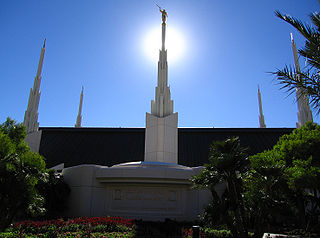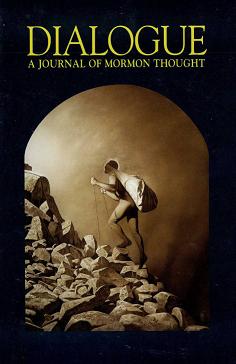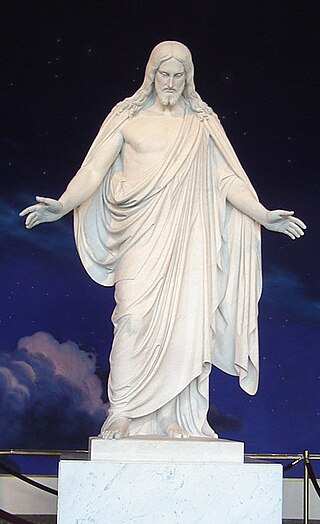The Beehive Standard Weekly is a conservative political and cultural news service for members of the Church of Jesus Christ of Latter-day Saints (LDS Church) and for those curious about the Mormon culture.
It originates from a newsletter called The Beehive, which began in 1975 as a 12-page circular in Las Vegas, Nevada, started by Charlene and Richard Taylor for a group of local women who attended the same congregation. At first, it covered only local religious events and activities. Circulation increased throughout the Las Vegas Valley, and in 1990 the Taylors' son Russell took over. [1] In 1993, he used resources from Arizona's defunct Latter-day Sentinel publication [2] to create a branch of the Beehive Newspaper referred to as the Arizona Beehive. [1] The Nevada Beehive was still widely available for free at convenience and grocery stores, or by paid mail subscriptions, and expanded distribution throughout Utah in 1993. [2] In 1994, readership was around 75,000 and the paper planned to debut the quarterly Beehive Singles News. [2]
In 2002, the Nevada Beehive was acquired by Las Vegas-based attorney Rob Graham who continued the growth of the publication as well as its readership base by providing popular content for a more general audience. The Taylor family continued to print the Arizona Beehive in Mesa, Arizona, independent of the Nevada Beehive, expanding to 25,000 copies distributed by mail or at businesses owned by LDS members. [1]
The Nevada Beehive became the Beehive Standard Weekly in 2005. In 2006, the organization shut down its hard copy newspaper to focus primarily on providing original online news content and political commentary.
The Beehive endorsed Mitt Romney and followed his campaign in 2007–2008, often defending Romney's religion and religious views from attacks. The organization was the first to suggest that Mormons might have been disaffected from the Republican Party by how Romney's religion was treated by Evangelical Christians from the southern states and how Mormons might swing towards supporting Barack Obama in the general election given his plea for civility and inclusion.
Though not authoritative, the Beehive does make commentary relating to Mormon doctrine and does explain the Mormon culture to non-Mormons. The Beehive also defends the Mormon faith from attacks by Anti-Mormons.

The Church of Jesus Christ of Latter-day Saints, informally known as the LDS Church or Mormon Church, is a restorationist, nontrinitarian Christian denomination that is the largest denomination in the Latter Day Saint movement. The church is headquartered in the United States in Salt Lake City, Utah and has established congregations and built temples worldwide. According to the church, it has over 17 million members and over 72,000 full-time volunteer missionaries. The church was the fourth-largest Christian denomination in the United States as of 2012, and reported over 6.8 million US members as of 2022.

Mormons are a religious and cultural group related to Mormonism, the principal branch of the Latter Day Saint movement started by Joseph Smith in upstate New York during the 1820s. After Smith's death in 1844, the movement split into several groups following different leaders; the majority followed Brigham Young, while smaller groups followed Joseph Smith III, Sidney Rigdon, and James Strang. Most of these smaller groups eventually merged into the Community of Christ, and the term Mormon typically refers to members of the Church of Jesus Christ of Latter-day Saints, as today, this branch is far larger than all the others combined. People who identify as Mormons may also be independently religious, secular, and non-practicing or belong to other denominations. Since 2018, the LDS Church has emphasized a desire for its members be referred to as "members of The Church of Jesus Christ of Latter-day Saints", or more simply as "Latter-day Saints".

Anti-Mormonism is discrimination, persecution, hostility, or prejudice directed against the Latter Day Saint movement, particularly the Church of Jesus Christ of Latter-day Saints. The term is often used to describe people or literature that are critical of their adherents, institutions, or beliefs, or involve physical attacks against specific Mormons, or the Latter Day Saint movement as a whole.

The Mormon corridor are the areas of western North America that were settled between 1850 and approximately 1890 by members of the Church of Jesus Christ of Latter-day Saints, who are commonly called "Mormons".

The Las Vegas Nevada Temple is the 43rd operating temple of the Church of Jesus Christ of Latter-day Saints. The temple was announced by church leaders in April 1984.

The Mormon colonies in Mexico are settlements located near the Sierra Madre mountains in northern Mexico which were established by members of the Church of Jesus Christ of Latter-day Saints beginning in 1885. The colonists came to Mexico due to federal attempts to curb and prosecute polygamy in the United States. Plural marriage, as polygamous relationships were called by church members, was an important tenet of the church—although it was never practiced by a majority of the membership.
This is a chronological listing of significant events surrounding Latter Day Saints seeking or winning political office. It refers primarily to members of the Church of Jesus Christ of Latter-day Saints, but also some members of other Latter Day Saint movement religions, such as Community of Christ, formerly the Reorganized Church of Jesus Christ of Latter Day Saints (RLDS). In addition to listing events chronologically, political firsts are noted. This list is very incomplete.

Dialogue: A Journal of Mormon Thought is an independent quarterly journal that addresses a wide range of issues on Mormonism and the Latter Day Saint Movement.
Family Services is a private nonprofit corporation owned and operated by the Church of Jesus Christ of Latter-day Saints. It offers members of the church and others marital and family counseling, addiction and drug dependency counseling, general psychotherapy, counseling, and other services to women or girls experiencing unintended pregnancy. In addition to individual counseling, classes are offered on strengthening marriage and families, along with the Addiction Recovery Program, which is based on the 12-step model and Christian values.

The Church of Jesus Christ of Latter-day Saints has had a presence in Mexico since 1874. Mexico has the largest body of LDS Church members outside of the United States. Membership grew nearly 15% between 2011 and 2021. In the 2010 Mexican census, 314,932 individuals self-identified most closely to the LDS Church.

The Church of Jesus Christ of Latter-day Saints is the second-largest religious denomination in Arizona, behind the Roman Catholic Church. In 2022, the church reported 439,411 members in Arizona, about 6% of the state's population. According to the 2014 Pew Forum on Religion & Public Life survey, roughly 5% of Arizonans self-identify most closely with the Church of Jesus Christ of Latter-day Saints.

The Church of Jesus Christ of Latter-day Saints in Nevada refers to the Church of Jesus Christ of Latter-day Saints and its members in Nevada. Nevada has the 7th most church members of any U.S. state, and the fifth-highest percentage of members. The LDS Church is the 2nd largest denomination in Nevada, behind the Roman Catholic Church.

The Church of Jesus Christ of Latter-day Saints in New Mexico refers to the Church of Jesus Christ of Latter-day Saints and its members in New Mexico. The first congregation of the Church in New Mexico was organized in 1895. It has since grown to 69,055 members in 137 congregations.
The Religious Studies Center (RSC) is the research and publishing arm of Religious Education at Brigham Young University (BYU), sponsoring scholarship on the culture, history, scripture, and doctrine of the Church of Jesus Christ of Latter-day Saints. The dean of Religious Education serves as the RSC's director, and an associate dean oversees the two branches of the RSC: research and publications.

David Frank Holland is an American professor and historian. He is currently the John A. Bartlett Professor of New England Church History and Interim Dean of Harvard Divinity School. He was previously a director of graduate studies in religion at Harvard University and an associate professor of history at University of Nevada, Las Vegas.

The John Whitmer Historical Association (JWHA) is an independent, nonprofit organization promoting study, research, and publishing about the history and culture of the Latter Day Saint movement. It is especially focused on the Community of Christ, other midwestern Restoration traditions, and early Mormonism. The Community of Christ's approach to its own history was influenced, in part, by historical problems raised and explored through JWHA publications and conferences, and those of its sister organization, the Mormon History Association. JWHA membership numbers around 400 and is open to all, fostering cooperation with LDS and non-Mormon scholars.

The following outline is provided as an overview of and a topical guide to the Church of Jesus Christ of Latter-day Saints.
The architecture of the Church of Jesus Christ of Latter-day Saints includes the design and use of the church's temples, meetinghouses, historic sites, and other buildings and facilities. The LDS Church is known for its unique and often imposing architecture. The church's architecture differs based on the uses of individual buildings and varies in style throughout the world.